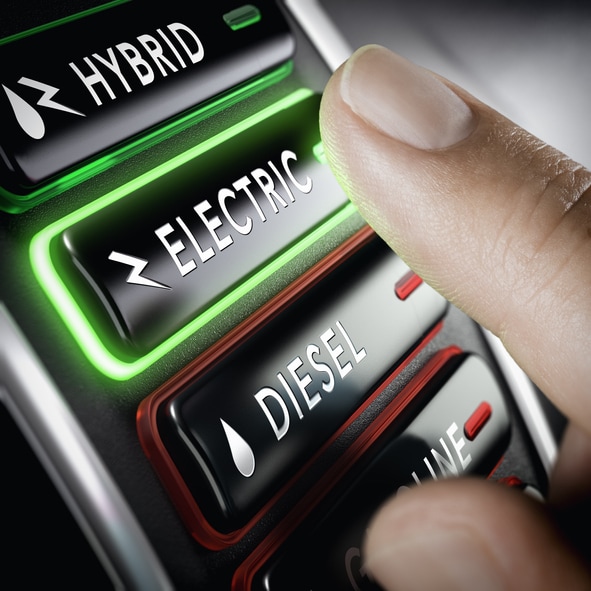
If you drive a traditional gas-powered car, you may be interested in switching to an electric vehicle (EV) to lower your environmental impact and enjoy more cost-efficient maintenance and operation. Learn more about the three primary types of EVs to help you decide which one might be right for you.
Hybrid Electric Vehicles (HEVs)
Hybrid electric vehicles feature both an internal combustion engine (ICE) and an electric motor powered by a battery pack. This type of electric car doesn’t plug in to recharge its battery—instead, regenerative braking and an ingeniously designed engine recharge the battery. You still fill up at the gas pump as you do with a conventional gas-powered vehicle, just less often.
Smaller engines are possible in HEVs thanks to the extra power provided by the electric motor, which can run the car for short distances at low speeds. The auxiliary battery also powers vehicle accessories, such as the radio and headlights, to reduce engine idling. These features make hybrid electric vehicles much more fuel-efficient than gas-only cars without sacrificing performance, range, or convenience.
Plug-in Hybrid Electric Vehicles (PHEVs)
This type of electric vehicle builds on the performance and efficiency of HEVs by giving drivers the option to charge the battery via an at-home wall outlet or public charging station. The battery can still charge itself using power from the ICE and regenerative braking, but the external charging option boosts fuel economy even further.
PHEV batteries are larger than those found in HEVs, allowing these cars to travel further on pure electric power, yet they can still run on gasoline when needed. This makes plug-in hybrids the best of both worlds, suitable for daily commutes and long-distance road trips alike while boasting better fuel economy than gas-powered cars in both cases.
Battery Electric Vehicles (BEVs)
Also known as all-electric vehicles, BEVs do away with internal combustion engines altogether. Instead, they run solely on electric power, using a large traction battery pack to power an electric motor. These vehicles conserve battery life with regenerative braking, but they must be plugged into an external power source to recharge. Because they consume no fossil fuels, BEVs emit zero exhaust.
Homeowners with solar panels can charge their BEVs virtually for free. Many cities also offer free public charging stations. Even without these benefits, charging an electric car costs about half as much as filling up at the gas pump. Just be aware that charging a BEV takes longer than filling a gas tank.
The demand for electric vehicles grows each year as the world looks for ways to combat climate change. Two high-performance BEVs worth considering are the Nissan Leaf and the Nissan Ariya. If you’re interested in checking out these cars, visit Route 9 Nissan in Westborough, MA, for a test drive. Our knowledgeable staff can recommend the best car for you based on your budget and lifestyle. Start by browsing our new and pre-owned Nissan inventory online. Then, contact us to get behind the wheel of a Nissan today!